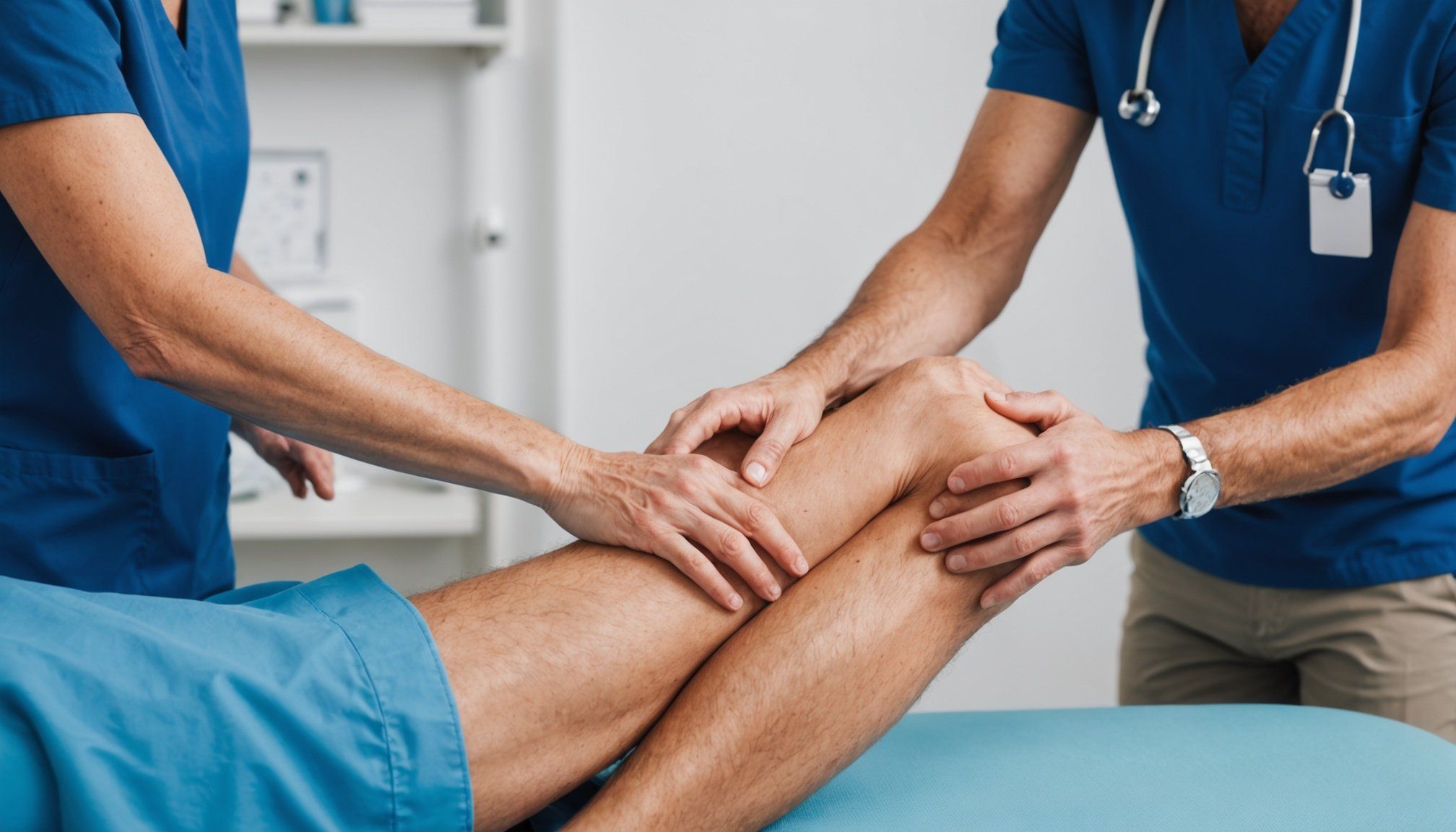Understanding Post-Operative Care for Knee Replacement
Post-operative care following a knee replacement is crucial for ensuring successful patient outcomes. This procedure typically involves replacing damaged parts of the knee joint with artificial components, a surgery often necessary due to conditions like arthritis. Patients undergoing knee replacement can face challenges such as pain, swelling, and limited mobility during recovery. These issues necessitate a comprehensive and tailored rehabilitation strategy to restore function.
Tailored rehabilitation is vital because it addresses the unique recovery needs of each patient, guiding them towards smooth and effective healing. The process often incorporates personalized exercise regimens, pain management techniques, and lifestyle adjustments. A significant body of evidence supports the effectiveness of post-operative care in improving outcomes. Studies show that structured rehabilitation can significantly enhance mobility and reduce complications, leading to better long-term results.
Rehabilitation strategies may also include patient-centric care approaches, where goals and preferences are thoroughly considered. Whether adapting exercises to fit patient capabilities or providing education on recovery expectations, this personalized focus ensures optimal care. By aligning treatment plans with individual patient profiles and integrating feedback, health professionals can maximize the benefits of post-operative rehabilitation after knee replacement surgery.
Essential Assessment Tools for Physiotherapists
A comprehensive patient evaluation is fundamental in knee rehabilitation, ensuring that each patient receives the most effective therapy. Key to this process are assessment tools, which form the backbone of tailored treatment plans.
Standardized Assessment Protocols
Physiotherapists utilize these protocols to gauge initial patient conditions, providing a baseline for future evaluations. This step is crucial as it helps identify specific patient needs and determine the most appropriate interventions.
Functional Evaluation Techniques
Assessment tools are leveraged to evaluate a patient’s range of motion, muscle strength, and overall mobility post-surgery. This evaluation guides therapists in formulating realistic and achievable rehabilitation goals, ensuring that the rehabilitation planning is truly individualized.
Progress Monitoring Methods
Ongoing patient assessments help track recovery and adjust treatments accordingly. By re-evaluating a patient’s progress, physiotherapists can adapt exercise regimens and strategies, ensuring optimal patient outcomes.
Incorporating patient feedback into these assessments is also critical. By understanding a patient’s experience and concerns, physiotherapists can tailor their approach, increasing the efficacy of the personalized treatment plan. This ensures that both patient and therapist are aligned in achieving successful recovery outcomes.
Developing Individualized Treatment Plans
Individualized treatment plans are paramount in effective rehabilitation planning following knee replacement surgery. To develop such plans, therapists must first thoroughly assess the patient. This evaluation involves understanding the patient’s specific needs, physical limitations, and personal goals. By focusing on the unique attributes of each case, health professionals can craft more effective interventions.
Incorporating patient-centered care involves taking their lifestyle and preferences into account to ensure the plan aligns with their daily life. A client’s occupation, hobbies, and overall activity level play significant roles in determining how to approach rehabilitation exercises and objectives.
A crucial aspect of creating successful treatment plans is interdisciplinary collaboration. This means involving various healthcare professionals—such as physical therapists, occupational therapists, and surgeons—in the planning process. Each professional contributes their expertise, ensuring a comprehensive approach that addresses all facets of a patient’s recovery. Such collaboration enhances patient outcomes by providing well-rounded support.
Ultimately, by emphasizing patient participation and integrating their feedback, physiotherapists can adapt and refine their strategies. This alignment not only enhances the effectiveness of the rehabilitation journey but also fosters patient satisfaction and engagement.
Exercise Regimens for Optimal Recovery
Engaging in well-designed exercise regimens is essential for achieving optimal recovery post-knee replacement. Starting with early mobilization strategies can significantly aid in enhancing post-operative mobility. Early movement helps mitigate joint stiffness and reduces complications. These exercises are often gentle and focus on restoring basic movements, laying a foundation for more intensive activities.
Progressing to strengthening and flexibility exercises is crucial for long-term success. These exercises aim to rebuild strength in the muscles surrounding the knee and improve joint flexibility, ultimately aiding in the patient’s ability to perform daily activities independently. Key exercises include isometric quadriceps contractions, hamstring curls, and gradual leg lifts. Such regimens should be tailored to accommodate the patient’s specific capabilities and recovery rate.
Implementing gradual progression and adjustment techniques ensures that exercise intensity and frequency are appropriately modified based on the patient’s progress and response to treatment. It is vital that each patient’s plan remains flexible; adjustments may be necessary to align with their recovery pace. By monitoring progress and being responsive to feedback, healthcare professionals can optimize outcomes and encourage patient participation in their rehabilitation journey.
Patient Education and Engagement
Educating patients about their rehabilitation journey is integral to ensuring successful recovery outcomes. It’s essential to convey clear, concise information regarding recovery expectations, which empowers patients to actively participate in their healing process. Addressing typical post-surgery concerns, such as timelines and milestones, can reduce anxiety and build confidence in the patient.
To promote engagement strategies, techniques such as motivational interviewing and setting achievable goals can be effective. When patients understand the rationale behind their treatment plans, they are more likely to adhere to prescribed exercises and lifestyle adjustments. Personalized engagement strategies foster a sense of ownership, increasing compliance.
Tailoring education materials is crucial for addressing the diverse needs of the patient population. These materials should be accessible and considerate of varied literacy levels and cultural backgrounds, thereby enhancing understanding and participation. For example, visuals or digital tools can be employed to better explain complex processes to those with limited language proficiency.
Ultimately, integrating patient education and engagement ensures that patients are informed, motivated, and committed to their rehabilitation journey. By taking a patient-centered approach, healthcare providers can maximize recovery success and foster a collaborative therapeutic relationship, leading to more resilient and confident patients.
Case Studies and Practical Examples
Exploring case studies and real-life examples in knee replacement rehabilitation provides valuable insights into effective practices. By examining success stories from physiotherapy practices, we can highlight the impactful outcomes achieved through tailored strategies. For instance, a patient who followed a personalized rehabilitation plan reported significant improvements in mobility and quality of life within six months post-surgery.
Understanding lessons learned from challenging cases is equally crucial. One case involved a patient struggling with post-operative complications due to previous health conditions. Through meticulous assessment and interdisciplinary collaboration, the physiotherapy team developed an adjusted exercise regimen and comprehensive care plan, ultimately enhancing the patient’s recovery process.
These experiences provide practical insights and emphasize the role of innovative problem-solving in knee rehabilitation. Looking to the future, these case study findings point towards emerging trends such as integrating technology for remote monitoring and enhancing patient engagement through digital platforms.
Utilizing these examples, healthcare providers can refine their approaches, ensuring that patients benefit from the latest developments in knee rehabilitation. By continuously learning from practical instances, we can innovate and elevate the standards of post-operative care in knee replacement scenarios.
Navigating Legal and Healthcare System Considerations
Understanding the legal considerations and navigating the healthcare systems involved in post-operative care for knee replacement are essential for practitioners in the UK. Physiotherapists must be aware of their legal responsibilities, including maintaining patient confidentiality, informed consent, and adhering to health and safety regulations during the rehabilitation process.
The UK regulations significantly influence patient referrals and treatment pathways. The National Health Service (NHS), a cornerstone of the UK healthcare system, plays a crucial role in determining the accessibility of resources and specialists needed in post-operative care. Practitioners often face challenges related to resource allocation and funding, impacting the availability of tailored rehabilitation strategies for patients.
Strategies to overcome these challenges include fostering collaborations with different healthcare providers to optimize resource utilization. Emphasizing patient-centered care and clearly communicating treatment benefits can help secure necessary support. Seeking alternative funding options, such as grants and partnerships with private healthcare providers, can also enhance service delivery.
By understanding and effectively navigating these considerations, healthcare providers can ensure their patients receive comprehensive and efficient care, ultimately leading to improved patient outcomes and satisfaction.











